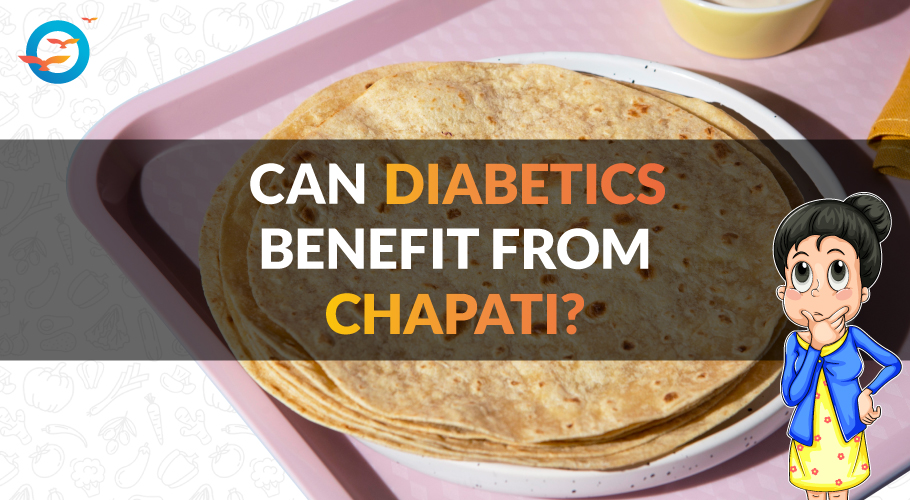Is Wheat Chapati a Good Choice for People with Diabetes?
Wheat chapati, also known as roti, holds a very special place in Indian kitchens. It is one of the most commonly eaten foods, often paired with vegetables, dals, and curries. For many families, no meal feels complete without chapati. But when it comes to diabetes, people often wonder—can I still enjoy chapati without worrying about my blood sugar? The answer is encouraging: yes, wheat chapati can be part of a diabetes-friendly diet if it is chosen and prepared in the right way.
Let’s look deeper into why whole wheat chapati is suitable for people with diabetes, how to make it healthier, and what precautions to take.
What Makes Whole Wheat Chapati Suitable for Diabetes?
The main reason wheat chapati works for diabetics lies in its fiber content. Whole wheat flour is unrefined and retains its bran and germ, which provide dietary fiber. Fiber plays a very important role in slowing down how quickly sugar is absorbed into the bloodstream after meals. This helps prevent sudden spikes in blood glucose levels, which is especially important for people with type 2 diabetes.
Apart from fiber, whole wheat flour also offers essential vitamins and minerals like magnesium, iron, zinc, and B vitamins. These nutrients support overall health, boost energy, and aid better metabolism.
Another key advantage is the glycemic index (GI). Whole wheat chapati has a lower GI compared to refined flour (maida) chapatis, which means it raises blood sugar more gradually. A slow and steady release of sugar allows better blood sugar control and helps you feel fuller for longer.
Is Organic Wheat a Better Choice for People with Diabetes?
In recent years, many people have shifted towards organic food. Organic wheat is cultivated without the use of chemical fertilizers, pesticides, or genetically modified seeds. This makes it a cleaner and more natural option.
Because organic wheat is usually less processed, it tends to retain more antioxidants, vitamins, and minerals than heavily refined wheat. For someone with diabetes, these extra nutrients can support immunity, gut health, and better sugar control. While organic wheat may not drastically lower blood sugar compared to regular wheat, it is still a healthier and safer choice for long-term health.
Why Should You Stick to a Trusted Brand of Wheat Flour?
Not all wheat flours are made the same way. Some brands mix refined flour with whole wheat to improve softness and texture. Unfortunately, this reduces the fiber content and increases the GI.
That’s why sticking to a trusted brand is helpful. Using the same brand consistently ensures that the chapatis you make will have a predictable taste, texture, and quality. This consistency matters when you are tracking your meals carefully for diabetes management.
If you prefer grinding your own flour, make sure the wheat used is fresh, clean, and not mixed with refined grains.
How Can You Make Chapati More Diabetes-Friendly?
Wheat chapati is already a good option, but a few mindful practices can make it even better for diabetics:
-
Always use whole wheat flour – Avoid mixing it with refined flour or maida.
-
Limit portion size – For most people with diabetes, two medium chapatis per meal is a safe guideline.
-
Cook without excess oil or ghee – Adding too much fat can make chapati heavy in calories. A dry-roasted chapati is best.
-
Pair wisely – Instead of eating chapati with starchy foods like potatoes or fried curries, combine it with low-GI vegetables (like bhindi, lauki, or methi), healthy fats (like avocado or nuts), and lean proteins (like dal, sprouts, or grilled paneer).
-
Add variety – You can also mix wheat flour with small amounts of other diabetic-friendly flours like barley, ragi, or jowar to increase fiber and nutrition.
By making these adjustments, chapati becomes not just a carbohydrate source but part of a balanced, blood sugar-friendly meal.
What If You Have Gluten Sensitivity or Allergy?
One important point to note is that wheat contains gluten, a natural protein that gives chapati its stretchy and soft texture. While most people can digest gluten without issues, some may develop sensitivities or even a medical condition like celiac disease.
If you experience symptoms like bloating, stomach pain, or allergic reactions after eating wheat, consult a doctor or dietitian. In such cases, gluten-free alternatives like jowar roti, bajra roti, or ragi roti can be healthier replacements. These grains are not only gluten-free but also rich in fiber and minerals, making them equally diabetes-friendly.
Final Thoughts
To sum it up, wheat chapati can definitely be a good choice for people living with diabetes—provided it is made with whole wheat flour, cooked with minimal fat, and eaten in moderation. Its high fiber content, lower glycemic index, and nutrient profile make it a healthier option compared to refined flour breads or polished rice.
The secret lies in mindful eating. Pay attention to portion sizes, pair chapati with nutrient-rich side dishes, and maintain balance in your meals. If organic or trusted brands are available, they add another layer of health benefits.
For those with gluten intolerance, alternative flours can easily be included without compromising on taste or nutrition.
So, the next time you are planning your meal, you don’t need to completely cut chapati out of your diet. Instead, prepare it wisely, enjoy it with healthy accompaniments, and let it be part of your journey towards better diabetes control.
👉 Want to explore more? Check out our blog: Best Flours for Diabetes



